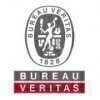Filter interviews by
JCB Interview Questions and Answers
111 Interview questions
Frequency is the number of occurrences of a repeating event per unit of time.
Frequency is measured in Hertz (Hz).
It is commonly used in electrical engineering to describe the rate at which alternating current changes direction.
Higher frequency signals can carry more data but may have shorter range.
Examples of frequency include 50 Hz for power supply in Europe and 60 Hz in the United States.
Joseph Cyril Bamford
JCB stands for Joseph Cyril Bamford, the founder of the construction equipment company JCB.
Joseph Cyril Bamford started the company in 1945 in England.
JCB is known for manufacturing construction, agriculture, waste handling, and demolition equipment.
I would tailor my pitch to highlight the specific benefits and features of the machine that align with the customer's needs and goals.
Understand the customer's industry and specific needs before pitching the machine.
Highlight how the machine can solve the customer's pain points or improve their processes.
Demonstrate the machine's features and capabilities through live demos or case studies.
Tailor the pitch to addr...
The types of motors used in hoists and conveyors include AC motors, DC motors, and hydraulic motors.
AC motors are commonly used in hoists and conveyors for their ability to provide constant speed and torque.
DC motors are also used for their precise speed control and high starting torque.
Hydraulic motors are used in heavy-duty applications where high torque is required.
Examples of motors used in hoists and conveyor...
PLC stands for Programmable Logic Controller, used in industrial automation to control machinery and processes.
PLC is a digital computer used for automation of electromechanical processes.
It uses a programmable memory to store instructions and specific functions.
PLCs are commonly used in manufacturing plants, assembly lines, and robotic devices.
They can be programmed using ladder logic, function block diagrams, or...
Certificates of degrees are essential for Research and Development roles.
Certificates of degrees demonstrate the candidate's educational qualifications and knowledge in their field.
They provide evidence of the candidate's ability to learn and apply knowledge.
Certificates of degrees can also indicate specialization or expertise in a specific area.
Employers often require degrees as a minimum qualification for Resear...
I aim to combine education and practical experience to achieve my goals in R&D, focusing on innovation and problem-solving.
Pursue a degree in a relevant field, such as biomedical engineering or materials science.
Engage in internships or co-op programs to gain hands-on experience.
Participate in research projects during my studies to apply theoretical knowledge.
Attend workshops and seminars to stay updated on in...
A hydraulic circuit is a system that uses fluid to transmit power and control the movement of mechanical components.
A hydraulic circuit typically consists of a power source, such as a hydraulic pump, which generates fluid flow and pressure.
The fluid is then directed through various components, such as valves, cylinders, and motors, to perform specific tasks.
Valves control the flow and direction of the fluid, allow...
Establishing quality control on a new line involves setting standards, implementing processes, and monitoring performance.
Define quality standards for the new line
Implement quality control processes such as regular inspections and testing
Train staff on quality control procedures
Monitor performance and address any issues promptly
Use quality control tools like checklists and statistical process control
Regularly revi...
Handling manpower involves effective communication, delegation, motivation, and conflict resolution.
Communicate clearly with team members to ensure understanding of tasks and expectations.
Delegate tasks based on individual strengths and skills to optimize productivity.
Motivate employees through recognition, rewards, and opportunities for growth.
Resolve conflicts promptly and fairly to maintain a positive work envi...
JCB Interview Experiences
148 interviews found
I appeared for an interview in Jan 2025.
Skills and problem-solving.
A comprehensive analysis of a topic.
A standardized assessment.
(3 Questions)
- Q1. What is the process of transforming voltage in a step-down transformer?
- Ans.
In a step-down transformer, voltage is reduced by having more turns in the secondary coil than in the primary coil.
Step-down transformers have a higher number of turns in the secondary coil compared to the primary coil.
This results in a decrease in voltage from the primary to the secondary coil.
The ratio of turns in the primary and secondary coils determines the amount of voltage reduction.
For example, a step-down tran...
- Q2. What is the Transformer..?
- Ans.
A transformer is an electrical device that transfers electrical energy between two or more circuits through electromagnetic induction.
Transformers are used to increase or decrease voltage levels in electrical circuits.
They consist of two coils of wire, known as the primary and secondary coils, wrapped around a core made of iron or other magnetic materials.
Transformers are commonly used in power distribution systems to ...
- Q3. What is voltage
- Ans.
Voltage is the difference in electric potential between two points in a circuit, measured in volts.
Voltage is the force that pushes electric current through a circuit.
It is measured in volts (V).
Higher voltage means more potential energy for electrons to flow.
Voltage can be DC (direct current) or AC (alternating current).
Ohm's Law. state that the strength of the current flowing in close circuit at a constant temp its directly propertional to the voltage across conductors propertional to resistance
(2 Questions)
- Q1. What are the different types of motors?
- Ans.
Different types of motors include DC motors, AC motors, stepper motors, and servo motors.
DC motors: Direct current motors that convert electrical energy into mechanical energy.
AC motors: Alternating current motors that use alternating current to produce rotational motion.
Stepper motors: Motors that move in discrete steps, commonly used in precision applications.
Servo motors: Motors that use feedback to control position...
- Q2. What is a generator in the context of electrical engineering?
- Ans.
A generator in electrical engineering is a device that converts mechanical energy into electrical energy.
Generators are commonly used in power plants to generate electricity for homes and businesses.
They can also be used in portable devices like RVs or construction sites.
Generators work by rotating a coil of wire within a magnetic field to create an electric current.
There are different types of generators including die...
Interview Preparation Tips
I applied via Recruitment Consulltant and was interviewed in Nov 2024. There was 1 interview round.
(12 Questions)
- Q1. Tell me your 2 Achievements & Failure?
- Q2. Difference between straightness & parallelism in gd&t?
- Ans.
Straightness ensures a line or surface is devoid of curves, while parallelism checks if two lines or surfaces remain equidistant.
Straightness is a condition where a feature must be a perfect line or surface without any deviation.
Example: A straight edge must not have any bends or curves along its length.
Parallelism ensures that two features are always the same distance apart, regardless of their length.
Example: The top...
- Q3. How to decide right material at right product?
- Ans.
Choosing the right material involves assessing performance, cost, and application requirements for optimal product integration.
Evaluate mechanical properties: For example, use aluminum for lightweight structures in vehicles.
Consider environmental factors: Use corrosion-resistant materials like stainless steel in harsh conditions.
Assess cost-effectiveness: Opt for composites in high-performance applications where weight...
- Q4. What is difference between india standard & international standard when you choose selection of material?
- Ans.
India and international standards differ in material selection based on regulations, testing methods, and environmental considerations.
Regulatory Framework: India follows IS (Indian Standards) while international standards may follow ISO or ASTM.
Testing Methods: International standards often have more rigorous testing protocols, e.g., ASTM D638 for plastics.
Material Properties: International standards may specify diffe...
- Q5. Defined GD&T with example?
- Ans.
GD&T (Geometric Dimensioning and Tolerancing) is a system for defining and communicating engineering tolerances.
GD&T uses symbols to convey complex geometric requirements clearly.
For example, a flatness tolerance ensures a surface is within a specified flatness range.
Another example is the position tolerance, which defines the allowable deviation of a feature's location.
GD&T improves manufacturing efficienc...
- Q6. Tell me sheet metal standard? & How is the best India standard comparetily international standard?
- Q7. Sheet metal design considerations?
- Ans.
Key considerations in sheet metal design include material selection, thickness, forming processes, and tolerances for optimal performance.
Material Selection: Choose materials like aluminum or steel based on strength, weight, and corrosion resistance.
Thickness: Determine appropriate thickness to balance strength and weight; for example, 1.5mm for automotive parts.
Forming Processes: Consider methods like stamping or bend...
- Q8. What is k factor in sheet metal?
- Ans.
The k factor in sheet metal defines the ratio of the neutral axis to the material thickness during bending.
The k factor is crucial for accurate bend calculations in sheet metal design.
It typically ranges from 0.3 to 0.5, depending on the material and bend radius.
For example, a k factor of 0.33 is often used for mild steel.
Understanding the k factor helps in predicting the final dimensions after bending.
- Q9. Difference between Runout & Total Runout in GD&T?
- Ans.
Runout measures deviation from a true circular path; total runout includes both circular and axial variations.
Runout refers to the deviation of a surface from a true circular path when rotated around an axis.
Total runout combines circular runout and axial runout, measuring the total variation of a surface along its length.
For example, if a shaft has a circular runout of 0.01 mm, it means the surface deviates by that am...
- Q10. How to select material in any part when you have design?
- Ans.
Selecting materials involves evaluating properties, costs, and application requirements for optimal performance and safety.
Identify mechanical properties needed (e.g., strength, ductility) - for example, aluminum for lightweight structures.
Consider thermal properties - use thermoplastics for parts exposed to high temperatures.
Evaluate corrosion resistance - stainless steel for components in harsh environments.
Assess co...
- Q11. What is yield point of material?
- Ans.
The yield point is the stress at which a material begins to deform plastically, marking the transition from elastic to plastic behavior.
The yield point indicates the maximum stress a material can withstand without permanent deformation.
For example, steel has a yield point around 250 MPa, meaning it can handle this stress before deforming.
Materials like rubber have a very low yield point, making them more flexible and p...
- Q12. What is ultimate strength?
- Ans.
Ultimate strength is the maximum stress a material can withstand before failure.
It is a critical property in material science and engineering.
Ultimate tensile strength (UTS) is a common measure for metals.
For example, steel has a high ultimate strength, making it suitable for construction.
In contrast, materials like rubber have lower ultimate strength, limiting their applications.
Interview Preparation Tips
- Sheet Metal
- Industrial Products
- Products Development
- Strength of material
- Engineering Mechanics
When you apply for vehicle integration profile.
Skills evaluated in this interview
I appeared for an interview in Jan 2025.
(2 Questions)
- Q1. They asked for incoterms and import process.
- Q2. They ask for excel and other details.
Interview Preparation Tips
Veronica 559r9diisjdfjj
(4 Questions)
- Q1. Diploma engineering
- Q2. B tech Electrical
- Q3. Diploma electrical
- Q4. Iti election cv
(1 Question)
- Q1. Experience the mere pass
- Ans.
Experience is essential for a Clearing Officer role to ensure efficient handling of clearing processes.
Experience in processing import/export documentation is crucial
Knowledge of customs regulations and procedures is necessary
Ability to communicate effectively with clients and customs officials is important
I applied via LinkedIn and was interviewed in Dec 2024. There were 2 interview rounds.
(2 Questions)
- Q1. 2 stroke engine and 4 stroke engine
- Q2. Type of engine
- Ans.
The type of engine refers to the design and configuration of the engine used in a specific application.
The type of engine can be classified based on fuel type (gasoline, diesel, electric, etc.)
It can also be classified based on the number of cylinders (4-cylinder, 6-cylinder, etc.)
Other classifications include rotary engines, hybrid engines, and turbine engines.
(2 Questions)
- Q1. Introduce your self
- Ans.
I am a dedicated and experienced Production Engineer with a strong background in manufacturing processes and quality control.
Bachelor's degree in Mechanical Engineering
5+ years of experience in production engineering
Proficient in CAD software and manufacturing processes
Led successful projects to improve production efficiency
- Q2. Family members
I applied via Walk-in
(2 Questions)
- Q1. Haw to work ni valve
- Ans.
To work in valve, one must understand the function of the valve, how to operate it, and how to troubleshoot common issues.
Understand the purpose and function of the valve
Learn how to operate the valve properly
Know how to troubleshoot common issues with the valve
- Q2. How to work process in maintenance work
- Ans.
Maintenance work involves following a structured process to ensure equipment and facilities are functioning properly.
Create a maintenance schedule to regularly inspect and service equipment
Document all maintenance activities and keep records for future reference
Prioritize maintenance tasks based on criticality and impact on operations
Train maintenance staff on proper procedures and safety protocols
Utilize technology su...
(2 Questions)
- Q1. How to work skills
- Ans.
Working skills involves continuous learning, practice, and application to enhance professional capabilities and effectiveness.
Identify key skills relevant to your field, such as programming languages for tech roles.
Engage in hands-on projects to apply theoretical knowledge, like contributing to open-source software.
Seek feedback from peers and mentors to improve your skills, such as code reviews in software development...
- Q2. Types of plc m/ c control in plc
- Ans.
PLC can be controlled using various types of programming languages such as ladder logic, function block diagram, structured text, and sequential function chart.
Ladder Logic: Uses graphical representation of relay logic to control PLC.
Function Block Diagram: Represents control system as interconnected blocks.
Structured Text: Similar to high-level programming languages like C.
Sequential Function Chart: Represents control...
Hydraulic Radiator used
Interview Preparation Tips
Skills evaluated in this interview
I applied via Company Website and was interviewed in Jul 2024. There was 1 interview round.
(4 Questions)
- Q1. CAN,LIN,UDS protocol
- Q2. Canoe,Automation,manual test analysis
- Q3. Extra ordinary work on samrt surface and DMS
- Q4. Prepration of the case
Interview Preparation Tips
Supplier Quality Assurance Engineer Interview Questions & Answers
posted on 12 Sep 2024
I applied via Approached by Company and was interviewed in Aug 2024. There were 2 interview rounds.
(2 Questions)
- Q1. Tell me about fabrication process,
- Ans.
Fabrication process involves transforming raw materials into finished products through various manufacturing techniques.
Fabrication process can include cutting, bending, welding, machining, and assembling of materials.
Examples of fabrication processes include sheet metal fabrication, CNC machining, and 3D printing.
Quality control measures such as inspections and testing are crucial in ensuring the final product meets s...
- Q2. Types of welding, defects of welding
- Ans.
Types of welding include MIG, TIG, stick, and flux-cored. Common defects in welding include porosity, lack of fusion, and cracks.
Types of welding: MIG, TIG, stick, flux-cored
Defects in welding: porosity, lack of fusion, cracks
Porosity: caused by gas entrapment during welding process
Lack of fusion: incomplete bonding between weld metal and base metal
Cracks: can occur due to high stress or improper welding technique
(2 Questions)
- Q1. Salary discussion
- Q2. Company's rules and policies
- Ans.
The company's rules and policies are designed to ensure quality, compliance, and efficiency in all aspects of operations.
Company rules and policies are in place to maintain quality standards and ensure compliance with regulations.
Employees are expected to adhere to these rules and policies to promote efficiency and consistency in work processes.
Examples of company rules may include guidelines for product testing, suppl...
Interview Preparation Tips
I applied via Naukri.com
(2 Questions)
- Q1. What is a store management?
- Ans.
Store management involves overseeing operations, inventory, staff, and customer service to ensure efficient store performance.
Inventory Management: Keeping track of stock levels to avoid overstocking or stockouts. For example, using software to monitor sales trends.
Staff Management: Hiring, training, and scheduling employees to ensure optimal performance. For instance, conducting regular training sessions.
Customer Serv...
- Q2. How to manage store keep you ?
- Ans.
Effective store management involves organization, inventory control, staff training, and customer service to ensure smooth operations.
Organize inventory systematically to facilitate easy access and tracking.
Implement an inventory management system to monitor stock levels and reorder supplies.
Train staff on product knowledge and customer service skills to enhance the shopping experience.
Regularly analyze sales data to i...
I appeared for an interview in May 2025, where I was asked the following questions.
- Q1. Your qualification
- Ans.
I hold a degree in Robotics Engineering, specializing in automation and robotic systems, with hands-on experience in operating robotic machinery.
Bachelor's degree in Robotics Engineering from XYZ University.
Completed an internship at ABC Robotics, where I operated and maintained robotic arms.
Certified in Programmable Logic Controllers (PLCs), enhancing my ability to troubleshoot and optimize robotic systems.
Participate...
- Q2. Parts of robot
- Ans.
Robots consist of various components that work together to perform tasks, including sensors, actuators, and controllers.
Sensors: Devices that detect environmental conditions (e.g., cameras, LIDAR).
Actuators: Mechanisms that enable movement (e.g., motors, servos).
Controllers: The brain of the robot, processing inputs and controlling outputs (e.g., microcontrollers).
Power Supply: Provides energy to the robot (e.g., batte...
Top trending discussions






JCB Interview FAQs
Some of the top questions asked at the JCB interview -
The duration of JCB interview process can vary, but typically it takes about less than 2 weeks to complete.
Tell us how to improve this page.
JCB Interviews By Designations
- JCB Assistant Manager Interview Questions
- JCB Quality Engineer Interview Questions
- JCB Quality Inspector Interview Questions
- JCB Electrical Engineer Interview Questions
- JCB Diploma Apprentice Trainee Interview Questions
- JCB Apprentice Trainee Interview Questions
- JCB Deputy Manager Interview Questions
- JCB Engineer Interview Questions
- Show more
Interview Questions for Popular Designations
- Assistant Manager Interview Questions
- Quality Engineer Interview Questions
- Quality Inspector Interview Questions
- Associate Interview Questions
- Analyst Interview Questions
- Software Developer Interview Questions
- Sales Executive Interview Questions
- Associate Software Engineer Interview Questions
- Show more
Overall Interview Experience Rating
based on 203 interview experiences
Difficulty level
Duration
Interview Questions from Similar Companies
|
Assistant Manager
749
salaries
| ₹5.2 L/yr - ₹15 L/yr |
|
Deputy Manager
518
salaries
| ₹7.6 L/yr - ₹20.4 L/yr |
|
Senior Engineer
413
salaries
| ₹4.1 L/yr - ₹9.8 L/yr |
|
Quality Engineer
278
salaries
| ₹1.8 L/yr - ₹5 L/yr |
|
Manager
237
salaries
| ₹11.3 L/yr - ₹28.8 L/yr |

Landmark Group

McDonald's

IntouchCX

Bureau Veritas
- Home >
- Interviews >
- JCB Interview Questions













